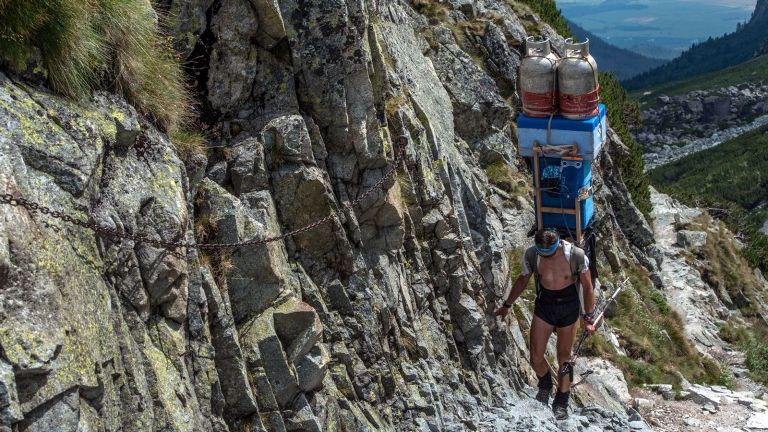
The last sherpas of Europe
Life Desk
Published:22 Apr 2021, 12:53 PM

The last sherpas of Europe
In a decorative wooden building in the town of Starý Smokovec at the foot of the High Tatra Mountains in Slovakia, a collection of frames lean against a wall. They look a bit like toboggans except they have shoulder straps and a couple of them are so tall they go right up to the ceiling. Some of the frames have rucksacks attached. These are the carrying frames that the porters of the Tatras, known locally as horský šerpa (mountain sherpas) or horský nosi (mountain carriers), use to take heavy loads up to the mountain huts or chalets that provide refreshments, and in some cases, overnight accommodation for mountain hikers. Although the mountain carriers are also called sherpas locally, they are not related to the ethnic group of Sherpas of Tibetan origin in the Himalayas and Nepal. The frames are on display here at the Sherpa Museum, but ones like these are still used to carry supplies up and down these steep mountain trails.
The High Tatras range runs along the border of northern Slovakia and Poland. In summer, visitors enjoy the scenic forests, sparkling lakes and wide valleys, admiring the flora and fauna while exploring hundreds of kilometres of hiking trails between the mountain huts. In winter, the rocky ridges and jagged mountain peaks that soar up to 2,500m take on a mysterious air, covered with snow and ice and standing out starkly above the tree line.
Europe's last sherpas climb rugged and dangerous paths through these peaks to huts at altitudes of up to 2,250m, wearing skis and crampons in snow and ice and using chains in places to pull themselves and their heavy loads up vertical slopes. Strapped to their back and secured with heavy shoulder straps is the special carrying frame, itself weighing up to 8kg. On this they secure food, beverages, firewood and any other materials the hut needs, such as fuel, gas cylinders and bed linen. The loads often weigh more than 100kg in total, and the sherpas work in all weather, from hot summers to cold and stormy winters when temperatures can descend to -20C and the mountains are frozen with snow and ice.
When I visited on a cold January day, the Swiss House where the Sherpa Museum is located was surrounded by snow. One of the oldest sherpas, 75-year-old Peter Petras, was drinking tea in the Sherpa Caffe next door. He still carries heavy loads up to a mountain hut a few times a week. And he's not even the oldest carrier; ages range from 17 up to 79.
These are the carrying frames that the porters of the Tatras, known locally as horský šerpa (mountain sherpas) or horský nosi (mountain carriers), use to take heavy loads up to the mountain huts or chalets that provide refreshments, and in some cases, overnight accommodation for mountain hikers. Although the mountain carriers are also called sherpas locally, they are not related to the ethnic group of Sherpas of Tibetan origin in the Himalayas and Nepal. The frames are on display here at the Sherpa Museum, but ones like these are still used to carry supplies up and down these steep mountain trails.